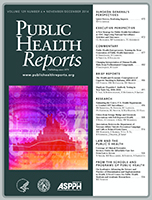
Hepatitis C virus (HCV) is the leading cause of chronic liver disease and cirrhosis in the United States. According to the CDC, approximately 1.3% of the U.S. population is HCV antibody-positive (indicating exposure to the virus during the individual’s lifetime), and 1.0% have chronic HCV. However, in New York City, the estimated prevalence of HCV infection is an estimated 2.4 % of New York City residents, and half are not aware of their status. To address this dangerous discrepancy, the NYC Department of Health and Mental Hygiene launched its Check Hep C Program, which, in its first year has helped increase the rate of complete hepatitis C (HCV) diagnostic testing among at risk populations, and successfully linked more people to HCV supportive services, care, and treatment.
The Check Hep C program has funded eight organizations at 12 community sites, including syringe exchange programs and community health centers. More than 4,500 people were screened and tested in the program’s first twelve months, and of those who tested HCV RNA positive, 85 percent attended their first medical appointment, with 50 percent remaining in care, and situated to benefit from the HCV treatment advances of 2014.
In describing the Check Hep C program, Mary Ford, MS, program evaluator for the program observes in an American Association for the Study of Liver Diseases (AASLD) release, that: “The screening protocol for the Check Hep C program includes testing those in the birth cohort as well as those who are at high risk from injection drug use either currently or in the past.”
After the Centers for Disease Control and Prevention (CDC) recommended a one-time screening for HCV infection for all Americans born from 1945 to 1965 (baby boomers), New York State passed a law mandating that health care providers offer a HCV test to individuals in this age group, and provide care or linkage to care for those who test positive. However, many people at high risk for HCV were not visiting a health care provider to get tested or screened.
According to Ms. Ford, “While a formal evaluation of the mandate has not been completed as of yet, we have collected anecdotal evidence from many of our partners and from providers that we have met with during the year, finding that adherence varies widely — lack of knowledge by primary care providers, lack of accountability by leadership, lack of adequate resources for testing, lack of integration between service delivery locations, etc.”
In order to increase screening in groups at highest risk for HCV, the Program generated awareness about HCV and recruited patients through a local media campaign and targeted outreach. The program improved rates of complete diagnosis through field based rapid testing, and confirmation (RNA testing) immediately after HCV antibody positive tests.
In the Check Hep C program population, estimated prevalence of HCV infection was 14 percent, and 9 percent among persons born after 1965 and 14 percent among baby boomers. Among enrollees, 25 percent had injected drugs in the past (20 times more likely to have HCV infection), 15 percent were homeless (1.6 times more likely to have HCV infection), and 18 percent had been previously incarcerated (5 times more likely to have HCV infection). In addition to supporting the birth cohort based screening recommendation of the CDC, the authors of the article recommend expanding the Check Hep C model to settings with high-risk populations.
“Further outreach and education to primary care providers will be needed to fully implement the testing mandate, and programs like Check Hep C will play an integral role this process in high-risk communities, says Ms. Ford. “The successful model demonstrated in Check Hep C can be replicated not only in community-based organizations, but also in community health centers, and outpatient clinics of large medical centers.”
 An evaluation of duplicate Hep C antibody testing conducted by NYC Department of Health staff entitled “Duplicate Hepatitis C Antibody Testing in New York City, 2006–2010” has been published in the latest issue of Public Health Reports, Volume 129, Number 6, November/December 2014., coauthored by Victoria Tsai, MPH, New York City Department of Health and Mental Hygiene, Long Island City, NY, Columbia University, Mailman School of Public Health, Department of Epidemiology, New York, NY, and currently affiliated with the Maryland Department of Health and Mental Hygiene, Baltimore, MD; Katherine Bornschlegel, MPH, New York City Department of Health and Mental Hygiene; Emily McGibbon, MPH, New York City Department of Health and Mental Hygiene; and Stephen Arpadi, MD, MS, Columbia University, Mailman School of Public Health, Department of Epidemiology Columbia University, College of Physicians and Surgeons, the Gertrude H. Sergievsky Center, New York, NY Columbia University, College of Physicians and Surgeons, Department of Pediatrics, New York, NY.
An evaluation of duplicate Hep C antibody testing conducted by NYC Department of Health staff entitled “Duplicate Hepatitis C Antibody Testing in New York City, 2006–2010” has been published in the latest issue of Public Health Reports, Volume 129, Number 6, November/December 2014., coauthored by Victoria Tsai, MPH, New York City Department of Health and Mental Hygiene, Long Island City, NY, Columbia University, Mailman School of Public Health, Department of Epidemiology, New York, NY, and currently affiliated with the Maryland Department of Health and Mental Hygiene, Baltimore, MD; Katherine Bornschlegel, MPH, New York City Department of Health and Mental Hygiene; Emily McGibbon, MPH, New York City Department of Health and Mental Hygiene; and Stephen Arpadi, MD, MS, Columbia University, Mailman School of Public Health, Department of Epidemiology Columbia University, College of Physicians and Surgeons, the Gertrude H. Sergievsky Center, New York, NY Columbia University, College of Physicians and Surgeons, Department of Pediatrics, New York, NY.
The researchers observe that repeating a hepatitis C virus antibody test for a person who previously tested positive provides no new information, wastes resources, and may reflect poor coordination of medical care. Using public health surveillance data collected by the New York City Department of Health and Mental Hygiene, they evaluated the magnitude of duplicate antibody testing and assessed patient-level and facility-level risk factors for duplicate testing, finding that from 2006 to 2010, 70,257 duplicate tests were performed for 58,886 individuals in New York City, costing an estimated $1.4 million.
Analyses using a polytomous logistic regression model indicated that individuals in correctional and substance abuse treatment facilities were more likely to undergo duplicate testing, suggesting that future efforts focus on coordinating medical information and care for hepatitis C antibody-positive individuals to ensure that recommended diagnostic follow-up and treatment services are provided. The full PDF version of “Duplicate Hepatitis C Antibody Testing in New York City, 2006–2010” can be accessed here:
http://nychepbc.org/duplicate-hepatitis-c-antibody-testing/#sthash.Lit9uobc.dpuf8
The AASLD is the leading medical organization for advancing the science and practice of hepatology. Founded by physicians in 1950, AASLD’s vision is to prevent and cure liver diseases. This year’s Liver Meeting, is being held in Boston, November 7-11, bringing together more than 9,000 researchers from 55 countries. For more information, visit:
http://www.aasld.org
Liver Cancer Campaign Comes To New York City
In related news, the American Liver Foundation (ALF) recently promoted a special educational campaign commemorating October as Liver Cancer Awareness Month. Sponsored by Bayer and Onyx Pharmaceuticals, the campaign featured vibrant, eye-catching ads on New York City taxis, subways and buses. The ads urge people at risk for liver cancer to speak to their doctor. Risk factors for liver cancer include Hepatitis B, Hepatitis C, Fatty Liver Disease, excessive Alcohol Consumption and certain Metabolic Diseases.
The campaign rolled out on October 13th, and will continue into late November. If you see one of the ads, you are requested to snap take a photo and email it to them at
[email protected]
In return they’ll send you a Liver Life Walk tee-shirt.
The ALF also held a Liver Cancer Update at Mount Sinai Medical Center earlier this year. You can watch the presentations from Dr. Myron Schwartz, Dr. Edward Kim and Dr. Bethann Scarborough on their website:
http://www.liverfoundation.org/abouttheliver/info/livercancer/
For more information, visit:
http://nychepbc.org/alf-cancer-campaign-underground/#sthash.ZlAVFHIH.dpuf
Sources:
The American Association for the Study of Liver Diseases (AASLD)
Public Health Reports
The American Liver Foundation (ALF)


